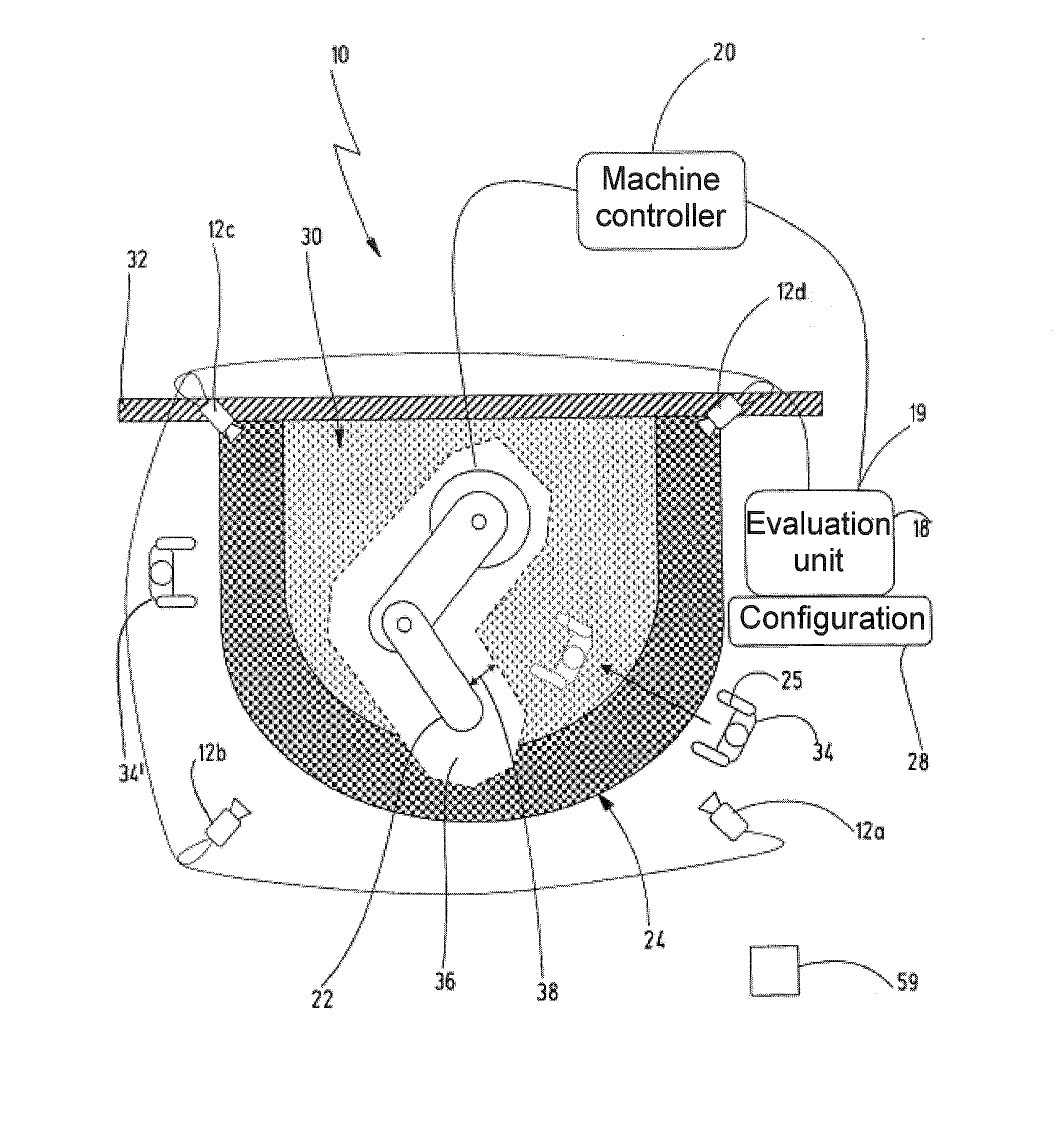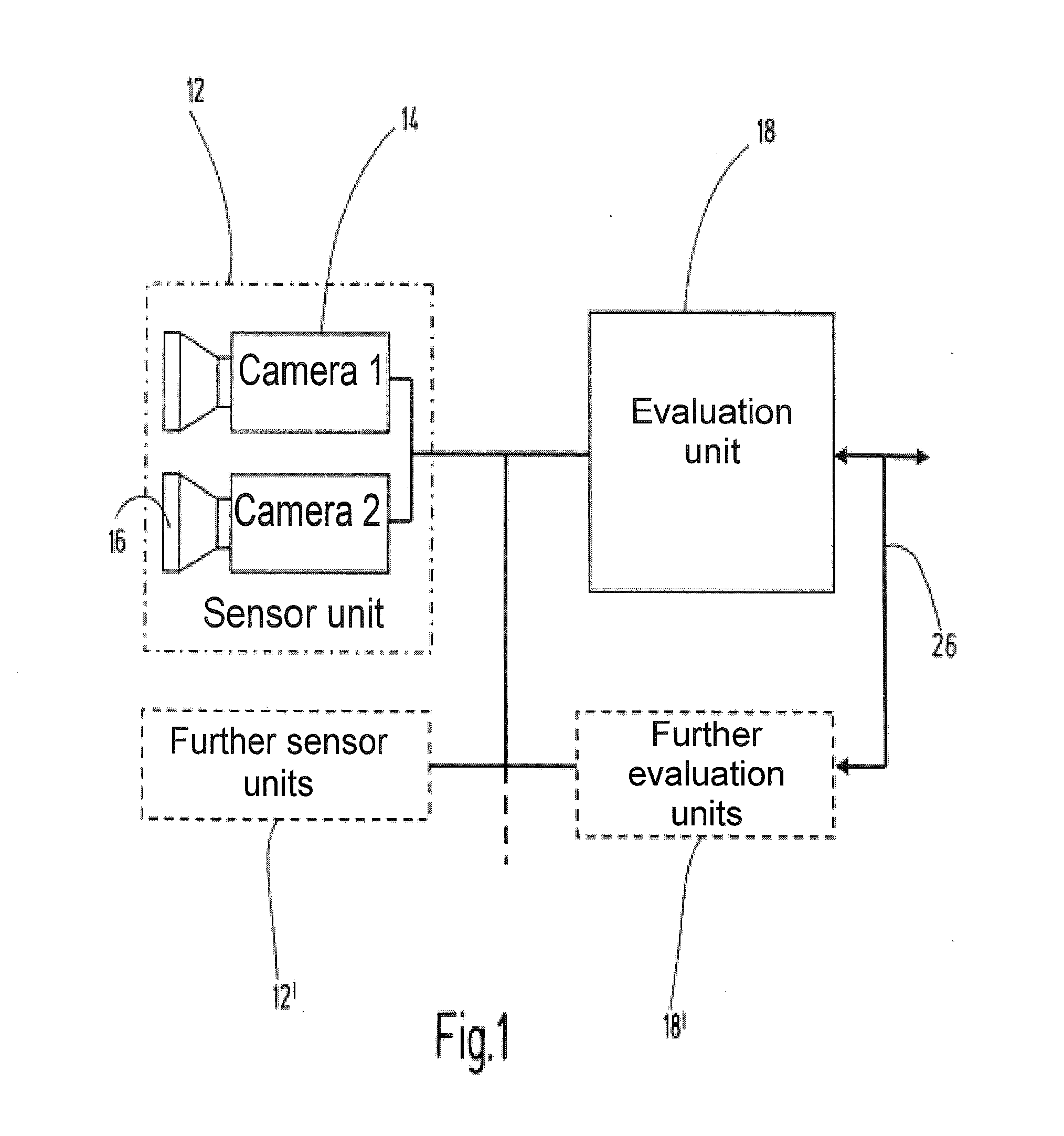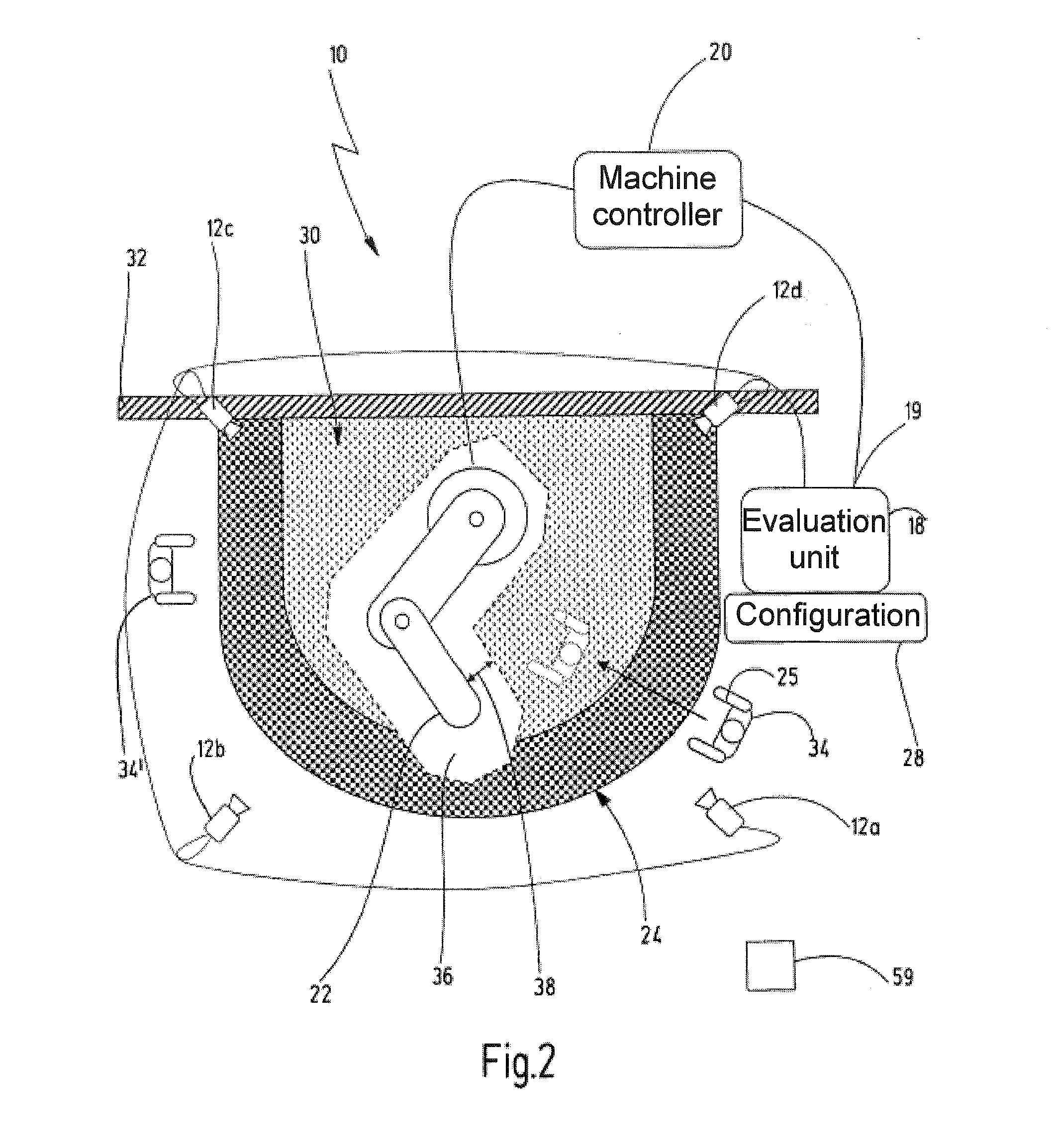Method and device for safeguarding a hazardous working area of an automated machine
a technology for safeguarding and working areas, applied in the direction of instruments, mechanical equipment, image enhancement, etc., can solve the problems of large space occupation, difficult installation of protective devices, and inflexible protective devices
- Summary
- Abstract
- Description
- Claims
- Application Information
AI Technical Summary
Benefits of technology
Problems solved by technology
Method used
Image
Examples
Embodiment Construction
[0044]In FIGS. 1 and 2, a preferred exemplary embodiment of the novel device is denoted in its entirety with the reference numeral 10.
[0045]The device 10 comprises at least one sensor unit 12 which is designed to provide a respective current 3-D image of the hazardous working area of an automated machine at defined intervals of time. In one preferred exemplary embodiment, the sensor unit 12 is a stereo camera system having at least a first camera 14 and a second camera 16. The cameras 14, 16 provide two images of the working area to be safeguarded, which images are slightly offset with respect to one another. On account of the (known) offset between the cameras 14, 16 and using trigonometric relationships, the distance between the sensor unit 12 and objects in the working area can be determined using the camera images. A preferred sensor unit is described in US 2005 / 207618 A which was mentioned at the outset and which is completely incorporated here by reference.
[0046]In other exemp...
PUM
 Login to View More
Login to View More Abstract
Description
Claims
Application Information
 Login to View More
Login to View More - R&D
- Intellectual Property
- Life Sciences
- Materials
- Tech Scout
- Unparalleled Data Quality
- Higher Quality Content
- 60% Fewer Hallucinations
Browse by: Latest US Patents, China's latest patents, Technical Efficacy Thesaurus, Application Domain, Technology Topic, Popular Technical Reports.
© 2025 PatSnap. All rights reserved.Legal|Privacy policy|Modern Slavery Act Transparency Statement|Sitemap|About US| Contact US: help@patsnap.com



